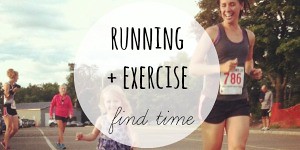Changing Up the Commute
>> Friday, May 28, 2010
I'm lucky enough to live only a few miles away from where I work. So, I really have no need for a car. Right? Well, truth be told -- my area isn't exactly bike-friendly. Yes, there are bike lanes and sidewalks, but they involve trekking across busy highways with loads of traffic. A non-auto commute, needless to say, is certainly not for the faint of heart. But I decided to give it a try earlier this week when the temps were high and the clouds were few.
The result: I am still in one piece. I got to work. I got home from work. I got some good exercise. And I'm planning to do it at least two to three times a week -- weather permitting.
Commuting to work by bus, bike, or on foot requires a certain level of planning, however. So, if you're fortunate enough to live close to your place of employment, you might consider taking alternative transportation for a day or two. Just to try it out. For the purpose of this post, I'm concentrating specifically on biking and walking. Not only is it good for the environment, but it's also good for your wallet and waistline.
Here are just a few tips to get you started:
1.) Plan out your route considering safety, ease of travel, and time. There are likely multiple ways to get where you need to be. Figure out the good, bad, and ugly about each. For me, the long way around is definitely quieter, but involves more hills and several more miles. As a compromise, I take the short way -- but in the area where I feel least safe, I ride on the sidewalk. I see others doing the same thing, so it's not a horrible thing to do (I know bicyclists need to obey traffic laws -- but until they improve the bike lanes around here, I'll break them for the 1/2 mile that makes me feel uneasy). But look at all your options and plan accordingly.
2.) Dress appropriately. The temps in our area were in the high 80s this week. So, I knew I didn't want to be a mess when I got to work. I dressed in layers. Packed a cardigan for the inevitable office chill (too much air conditioning). I wore spiffy shorts one day, a stretchy skirt the next (and, yes, it's possible to bike in a skirt and still be descent . . . practice makes perfect). If you're especially self conscious about sweating, etc., pack another shirt. Wear sensible shoes. If you're walking, flip-flops just won't do. And high heels on a bike? I don't think so. If you're concerned with fashion, think about bringing a change of clothes. Ultimately, you don't want to sacrifice safety and comfort for fashion.
3.) Saddle up with a backpack. Include other key gear. If you're walking, having a backpack will help alleviate back problems. You can stow away lunch, a laptop, your purse, change of shoes (if necessary), etc. If you're biking, same thing -- but you'll also need to throw in a bike lock. Oh, yeah. And don't forget a HELMET. I never, ever, EVER ride without a helmet. When you're on the road with cars buzzing past you going 1,000,000 miles an hour, you'll be happy you're wearing one, too.
4.) Pack all your supplies. As I mention above, you want to pack smart. But this doesn't just include the basic necessities. You'll also want to be sure to bring a bottle of water with you. (Hydrate, please!) Furthermore, if it's hot outside, you may even want to consider bringing your getting-ready routine on the road with you. Nothing's worse than melted makeup with asphalt embedded in your pores. I pack a small toiletries bag so that I can apply my makeup and fix my hair in the bathroom at work. I also bring deodorant and some face soap so I can lather up a bit beforehand. If you don't feel like carrying all of this in your bag, you may want to keep a supply kit in your desk.
5.) Leave yourself enough time to get to your destination. I was completely surprised to learn that it takes me exactly the same amount of time to bike to work as it does to drive and walk from my car to my office. Astounded, in fact. But I didn't know this the first day, so I was sure to allow myself a full half hour just in case. You may even wish to do a test walk or bike ride on a weekend to see how long it takes to get from point A to point B.
But leave yourself enough time to get to your office so that you won't be rushing and perhaps ignoring the rules in the following step . . .
6.) Obey the rules. Yeah, I'm not going to lie. I do break a biking rule on my route. But, unless there's a reason that is particularly compelling (seriously, folks -- that part of my route is DANGEROUS, so I'd rather take my chances with a couple pedestrians on the sidewalk), you must obey traffic rules on your ride. This includes hand signaling. Both walkers and bikers must look both ways a.) for your own safety and b.) for the safety of others. Think about when you're in the driver's seat in your vehicle. It's frustrating when you see cyclists, etc. not obeying rules (or just being confusing and oblivious). So, you want to be the model . . . less frustration for those in cars, less chance of accidents for you.
One more thing: Just like you would for your vehicle, be sure to check that your bike is in good working order being heading out. Check the brakes, tire levels, etc. And consider carrying a bike kit with you for any unforeseen emergencies.
One of my friends describes biking to her place of work as "empowering" -- and I certainly agree with her. The days I chose to get here without my car, I felt liberated. I felt happy and strong. I was also happy about the extra exercise I was squeezing in. And despite the relative difficulty of my particular route, it was fun! So, if you choose to travel an alternative way to your 9 to 5, be safe. And let us know if you have any other tips to add! Just leave a comment or email us at neverhomemaker@gmail.com.
Like what you just read? You can subscribe to the feed of these posts or follow us on Twitter or Facebook to be the first to know what the (never home)makers are up to. And we’ll love you forever!! Read more...

















